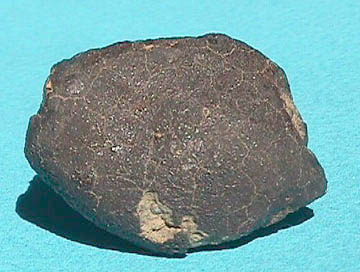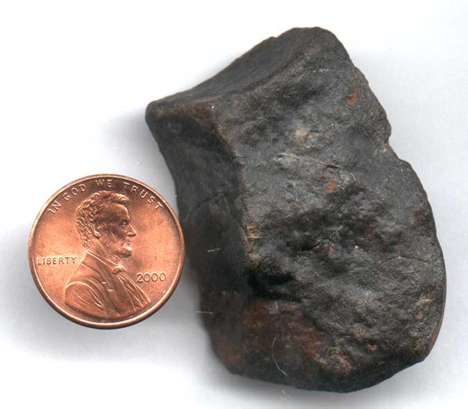|
The trip through the atmosphere causes the outer surface of a meteor to melt. This melt is blown off the falling rock by the blast of passing air. Small meteors completely melt away, but larger meteors hit the ground covered in a thin layer of melt that rapidly cools after landing to form a fusion crust. Because rock is an excellent insulator, the inside of a meteorite often still retains the cold of outer space and thus is nicely preserved upon reaching the ground.

The photo above shows a classic fusion crust with its network of thin cracks. The photo below shows a complete fusion crust. Both samples are chondrites, but you cannot see any chondrules because of the fusion crust. The fusion crust makes rocky meteorites look just like ordinary rocks that most people would never notice! The best places to find meteorites is where the surface is uniformly light colored: the dark meteorites stand out as unusual. The Sahara Desert and the Antarctic ice fields are great place to search for meteorites.

|

![]()

![]()